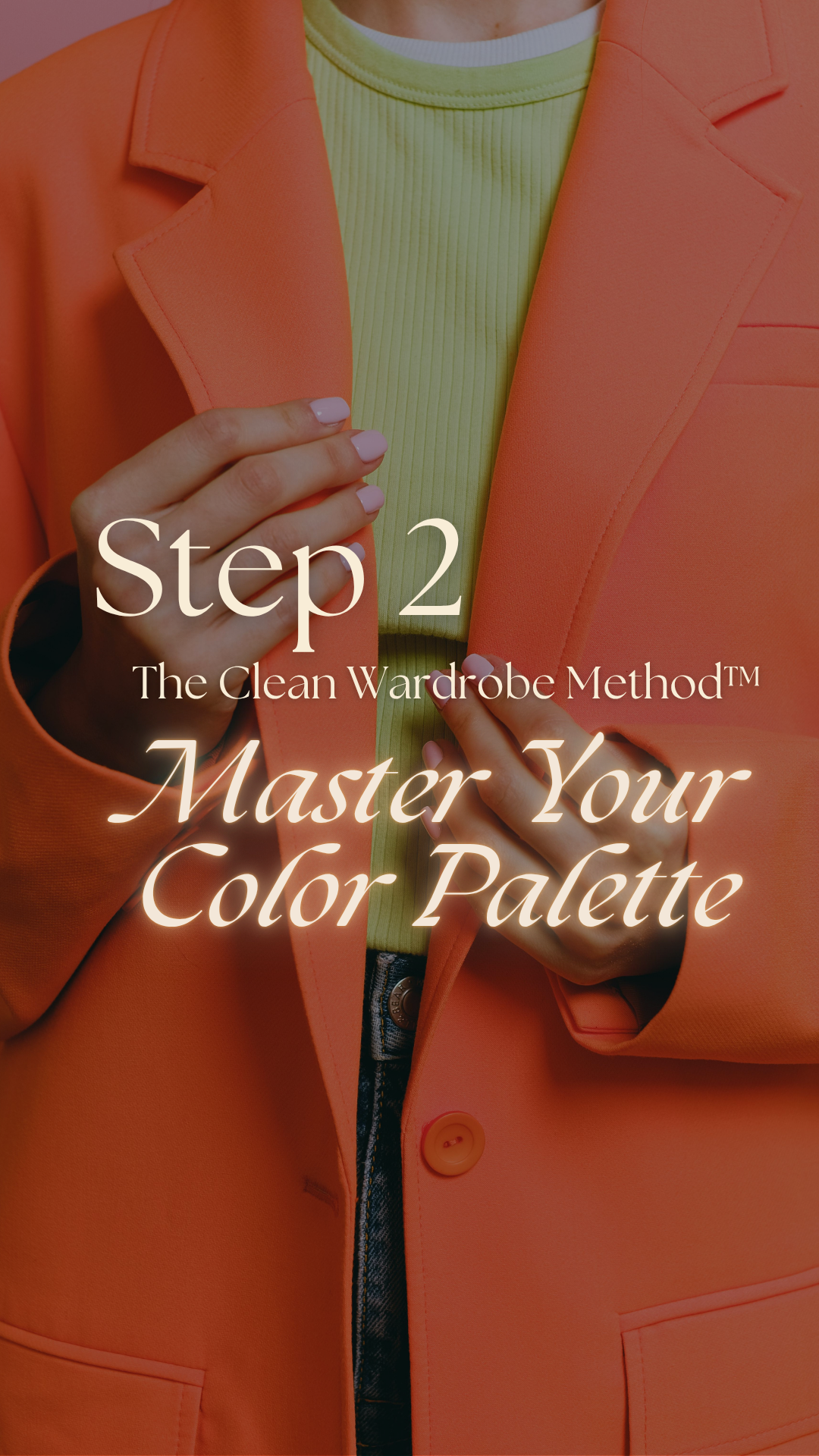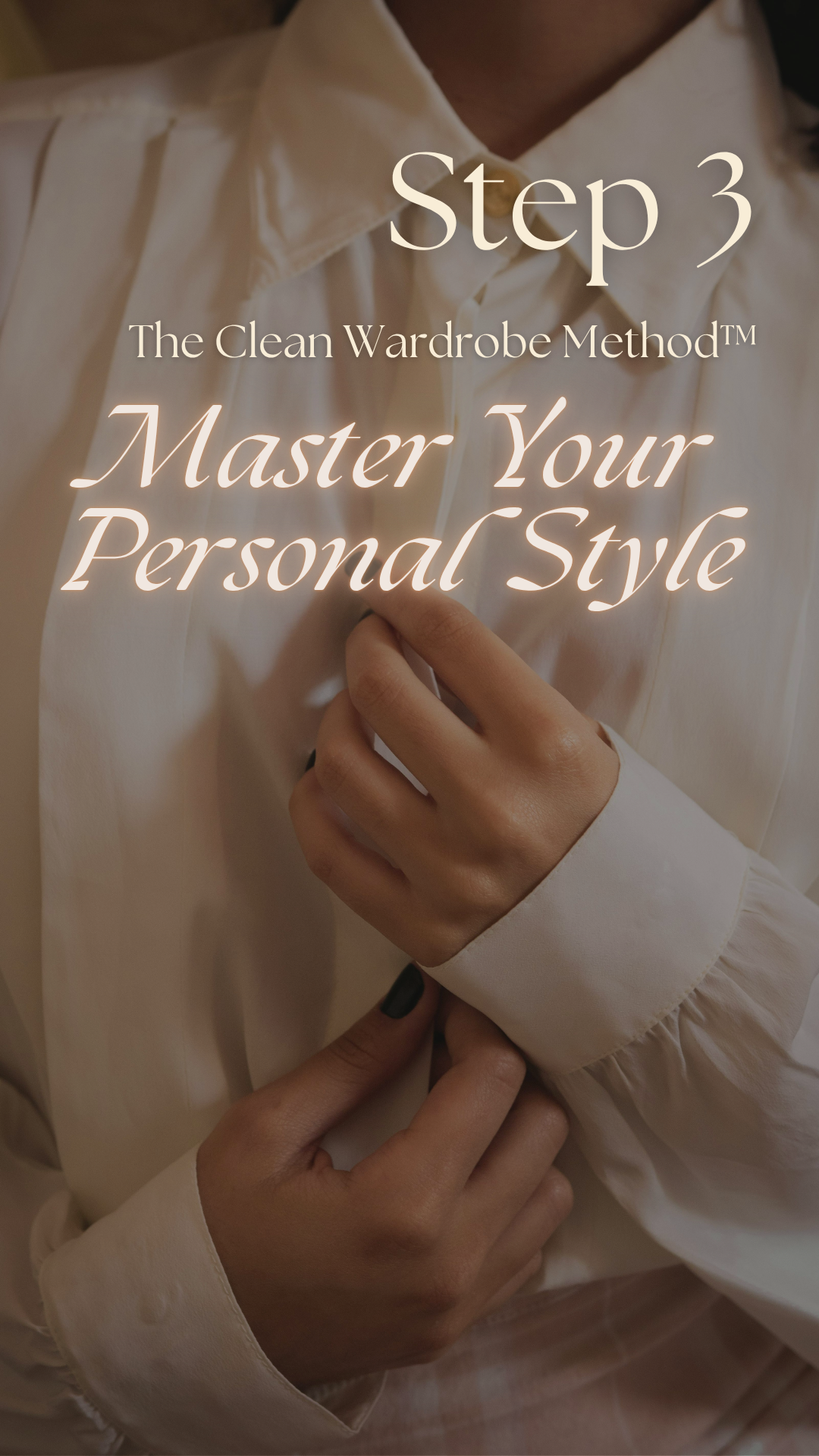The Clean Wardrobe Method™: Step 1 Declutter Your Wardrobe
Step 1 of THE CLEAN WARDROBE METHOD™. Learn how to declutter with intention, avoid fast fashion traps, and build a timeless wardrobe made from clean fabrics that work for your body, lifestyle, and health.
Table of Contents
1. How to Build a Clean Wardrobe That Lasts Forever
2. Why Decluttering Comes Before Shopping
3. STEP 1 — DECLUTTER WITH PURPOSE
4. Complete ALL Steps of THE CLEAN WARDROBE METHOD™
5. FAQs
1. How to Build a Clean Wardrobe That Lasts
Most of us don’t notice how much plastic we wear every single day. Polyester, nylon, acrylic, elastane… all petroleum materials that sit on our skin for hours. They trap heat, trap sweat, irritate the skin, and slowly break down into tiny particles that end up on our clothes, in the air, and sometimes inside our lungs or bloodstream.
Source: Penetration of Microplastics and Nanoparticles Through Skin: Effects of Size, Shape, and Surface Chemistry
And yet, we keep buying them. Why?
Because fast fashion made clothes so cheap and so constant that we rarely stop to think about what they’re made of. When you’re used to buying new pieces every few weeks, it’s easy to treat clothes like they have no long-term value.
But the moment you start caring about clean fabrics, quality, comfort, and how your clothes actually make you feel, something changes. Your wardrobe stops being a pile of random purchases and becomes something that reflects your life today.
That’s what THE CLEAN WARDROBE METHOD™ is built for.
It’s a simple 3-step system:
- Step 1 — Declutter with purpose
- Step 2 — Master your colors (members-only)
- Step 3 — Master your personal style (members-only)
Everything starts with Step 1.
2. Why Decluttering Comes Before Shopping
Buying ethical brands won’t change much if your current wardrobe is still full of clothes you don’t wear, fabrics you don’t enjoy, and pieces that quietly drain your confidence.
A cleaner wardrobe begins with clarity — not consumption.
This guide is not about forcing yourself to get rid of things before you’re ready. It’s about removing the items that add stress, guilt, discomfort, or confusion. When something gives you a small hit of shame every time you see it, that feeling becomes part of your daily life. And your clothes should never make you feel that way.
This isn’t a minimalist challenge.
This is not about owning less for the sake of “aesthetic.”
It’s about keeping what supports you today.
If you often struggle to let go of clothes you spent good money on, or things you think you might need “one day,” or pieces tied to a past version of you, this method gives you a calm way to work through all of it.
Now that your mindset is in place, let’s get into Step 1.
3. STEP 1 — DECLUTTER WITH PURPOSE
Decluttering doesn’t start with bags or boxes.
It starts with structure.
Below is the cleanest way to sort through your wardrobe without overwhelm.
1. Sort Your Wardrobe by Season
Sorting by category makes it too easy to idealize items you never reach for. Sorting by season forces you to see your clothes in the context where you’d actually wear them.
Break your closet into seasonal groups based on your climate:
- Late Spring
(end of April; when you’re officially putting your winter clothes away; perfect timing to sort out winter clothes you didn’t wear at all) - High Summer
(when it’s becoming really warm outside, perfect timing to sort out mid-season clothing from late Spring) - Early Autumn
(when it’s not that warm anymore, but not cold yet to wear winter clothes, perfect timing to sort out your summer clothes) - Deep Winter
(when it’s pretty cold; same logic applies here)
You don’t need to follow a strict calendar. The point is to place each item into the moment when you realistically use it.
This alone reveals a lot. You’ll quickly see:
- things you wore constantly
- things you never touched
- things you forgot existed
- things you always plan to wear “next year”
For example:
When I switched my closet to winter this year, I finally looked at my summer stack and saw two linen dresses I didn’t wear even once. I loved the idea of them, but not the reality. Seeing them in their true season made the decision easy.
2. Use the Rule of 5
Once everything is grouped by season, evaluate each item based on one simple measure:
Did I wear this at least five times during its season?
If not, it’s out.
Including:
- gifts
- “but it was expensive” purchases
- sentimental pieces you never use
The Rule of 5 is honest because it tracks your behavior, not your hopes.
Your habits tell the truth.
3. What Doesn’t Fit You Anymore Isn’t Supporting You
This is the category with the most emotion.
Clothes that don’t fit often sit in the back of the closet and whisper “try harder” every time you see them. That’s not motivation — that’s gaslighting.
Clothes are meant to fit your body as it is right now.
Not a past version of you.
Not a future version of you.
Not a fantasy.
And here’s something important: many clothes don’t fit not because of your body, but because the industry still doesn’t design for enough bodies. That failure belongs to the system, not to you.
If something is uncomfortable right now, it’s not supporting you — no matter how nice the brand is or how much you spent on it.
This is where emotional decluttering matters.
The Emotional Closet Edit
Some clothes take up space. Others take up headspace.
Emotional clutter is often heavier than the physical pile on the floor.
You are not alone if you have:
- items from an old chapter of your life
- pieces connected to an ambition you outgrew
- clothes tied to a relationship you left
- things you keep only because you paid a lot
- pieces you “might fit into again one day”
Editing these pieces isn’t about losing memories.
It’s about losing the constant feeling of being judged by your wardrobe.
To make this part easier, use the Fit & Feel Check.
Fit & Feel Check: A Quick Guide to Clear Out Clothes That Work Against You
Use these prompts to guide your decisions without pressure:
- Notice the mental load. If an item drains more energy than it gives, it doesn’t deserve space.
- Check the shame–convenience trade-off. If it makes you feel worse every time you see it, that’s your answer.
- Think about who could enjoy it more. Something that has sat untouched for years might make someone else genuinely happy.
- Watch out for guilt-based motivation. If guilt is the only reason you keep it, it’s not helping you.
- Check if it can be altered. A tailor can save a piece you love instead of letting it haunt you.
- Imagine seeing it in a store today. Would you buy it again?
- The friend test: Would you proudly give this to a friend? Or would you give it to someone you don’t like?
Your first instinct tells the truth.
This process makes emotional decluttering calm, intentional, and doable.
4. Check the Tags Inside Your Clothes Again
Now it’s time to look at fibers.
Separate your natural fibers from synthetics. You don’t need to throw everything away overnight. This step is simply about awareness.
Natural fibers:
cotton, linen, wool, silk, hemp, cashmere
Synthetics:
polyester, nylon, elastane, acrylic (especially in pieces that touch the skin)
Coats, boots, and bags made from synthetics are acceptable because they don’t stay in contact with your skin for hours.
But pieces like underwear, leggings, pajamas, and activewear matter more because they sit directly on sweat glands and lymph nodes.
Once you see how much plastic is in your wardrobe, your habits shift naturally.
→ Need help reading labels? Check out our fabric guide:
How to Read Clothing Labels
What Materials to Avoid & Why
How to Care for Your Garments
5. Replace the Basics First
If you try to replace everything at once, you’ll either give up or go into debt. Neither helps you feel better.
The fastest way to make a difference is start with replacing the basics made from synthetics:
- Bras
- Underwear
- Pajamas
- T-shirts
- Tanks
- Athletic wear
They sit directly on your skin all day, touch sweat glands, lymph nodes, and intimate areas, and so prioritizing them over a plastic blazer you wear twice a year matters more.
Swap them into natural fabrics like cotton, bamboo, TENCEL™ Lyocell, or peace silk. These are breathable, gentle, and won’t shed plastic particles into your body.
Here’s a simple replacement plan:
- Each month: replace 1–3 high-exposure basics
- Each season: replace 1–2 statement pieces in natural fibers
That’s it. In a year, your wardrobe and your skin will feel completely different.
4. Common Decluttering Mistakes
These are the patterns that hold people back:
- keeping clothes for a “future body”
- keeping expensive mistakes out of shame
- throwing everything out at once
- replacing too many things too quickly
- sorting by category instead of season
- keeping items because other people liked them
- confusing guilt with logic
Avoid these, and the process becomes much easier.
5. A Mindset Shift, Not a Shopping Spree
Step 1 isn’t about buying anything new.
It’s about subtracting the items that block your clarity so you can see what you actually need. Most people learn, after Step 1, that they own far more than they think — just not the right pieces.
A clean wardrobe starts with clarity, not consumption.
6. Complete ALL Steps of THE CLEAN WARDROBE METHOD™
FAQs
Can I keep synthetics if I already have them?
Yes but prioritize replacing anything that touches your core skin zones. Use what you have while slowly upgrading based on comfort.
How do I know if a fabric is synthetic?
Check the label. Anything ending in -poly, -acrylic, or -amide is synthetic. Need help decoding them? [See our Fabric Label Guide] (coming soon).
Is it expensive to replace everything?
It only feels expensive when you try to do it all at once. Spread replacements out over 6–12 months. Ethical fashion is an investment, not a splurge.
Do you offer personal help?
Yes. Inside my private club, I offer personalized swaps, seasonal wardrobe resets, and shopping lists for clean basics in your budget. You don’t have to figure this out alone.

